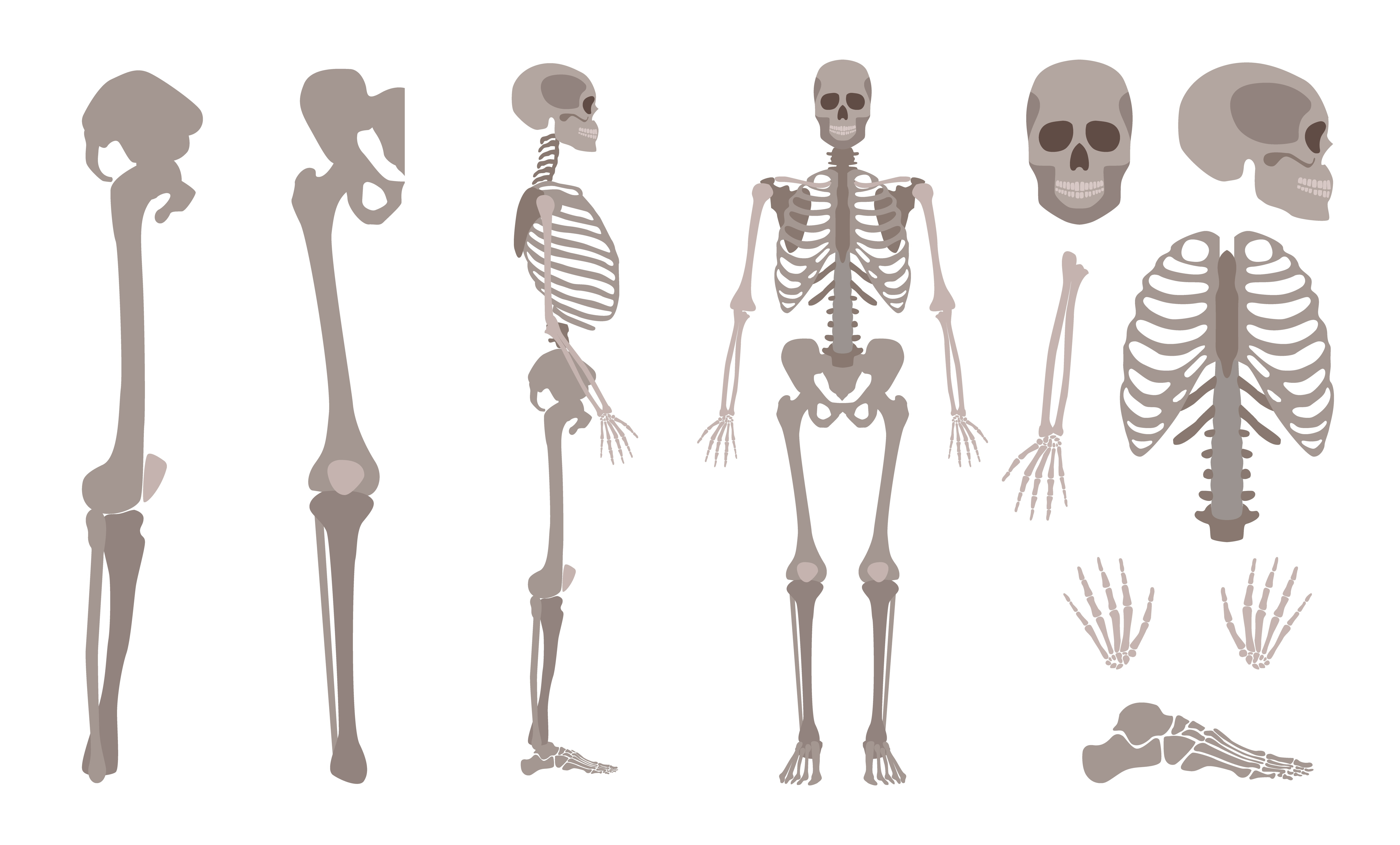The Skeletal System: Learn About the Human Skeleton

By: FUN Monster
Everybody in the world has a skeleton under their skin. Skeletons are made up of bones and serve many different purposes. They give your body structure, protect your internal organs, and allow you to move in any direction. There are 206 bones in an adult human body, and they all play an important role in the ability to live your life comfortably.
Skeletal System
The skeletal system provides rigidity to the body to ensure we aren't just blobs of flesh moving around. Every one of the 206 bones in our body plays a vital role, such as protecting the softer parts of the body. The rib cage protects the heart and lungs, the skull protects the brain, and the bones in your arms and legs help you move around by supporting the muscles. That doesn't mean the skeletal system only includes bones. It also includes the cartilage, ligaments, and tendons attached to the bones. Cartilage is a flexible connective tissue that absorbs shocks throughout the body and reduces the friction between bones to keep them from rubbing together when you move. Tendons are also connective tissue. They attach bones to the muscles in your body to help move the bone. Ligaments are tissues that hold bones together and keep them stable.
What are Bones Made Of?
You've probably seen bones in a museum before, so it's easy to think of them as dead, but that's not exactly true. While 70 percent of bones are made from calcium and not living tissue, the rest is as alive as you are. The inside of the bone is porous and spongy, making it light and easy to move around while also making plenty of room for blood vessels and the soft bone marrow at the center of it all. Being built like this means that your bones are slightly bendable. That means your bones won't easily break due to the hard outside of the bone, made out of calcium and other hard minerals, and the easily malleable inside.
Bone Marrow
Bone marrow is a soft substance in the center of the bones. There are two types of marrow: yellow and red. They both have important roles to play within the body. Red bone marrow contains white blood cells, blood stem cells like platelets, and red blood cells. This red bone marrow is where the body produces blood cells that cycle throughout the entire body. Every bone has red marrow when you're a baby, but by adulthood, only half of your bones have red marrow. Yellow bone marrow is made of fat and contains bone cells, fat, and cartilage. This marrow preserves fat for energy production and helps with the production of cartilage, fat cells, and muscle for the body.
Joints
Joints are what connect the bones. Some examples of joints that you can see are your knees and elbows. Joints are made of cartilage, a smooth and durable material that combines with a fluid to allow bones to rub against each other without grinding or wearing out over time. The role of joints is to control your range of motion.
How Do Broken Bones Heal?
As soon as your bone breaks, your body goes into overdrive to help it heal. With enough time and rest, your body can fix a broken bone on its own, but with the help of a doctor, you can make sure the bones heal straight with the use of a cast or sling. There are several stages to healing a broken bone. The first stage is blood pools around the injury to form a scab over the broken parts of the bone. The second step happens when tough tissue called collagen grows over the broken area to bridge the gap between the break. While the collagen transforms and hardens over the break, it needs time and extra care. The best way to provide extra care is to reduce stress on that bone because adding it could extend the duration of the healing process or worsen the break. That's why doctors often give patients crutches and slings to ensure the person doesn't put any excess pressure on their injury.
Fun Facts About Bones for Kids
Your bones have calcium to help your body grow big and strong. If you don't have enough calcium stored in your body, it will take that calcium from the bones and weaken them. You can replenish that calcium by drinking milk.
Babies are born with 300 bones. While you’re a kid, a lot of them fuse together, so you end up with less by the time you’re an adult.
Your bones stop growing when you turn 20, but new bone cells are constantly rebuilt.
The smallest bone in your body is in the ear and the longest bone is in the leg.
More than half of the 206 adult bones are located in the hands and feet.
Additional Resources
Skeleton Worksheet (PDF)
The Skeletal System (PDF)

